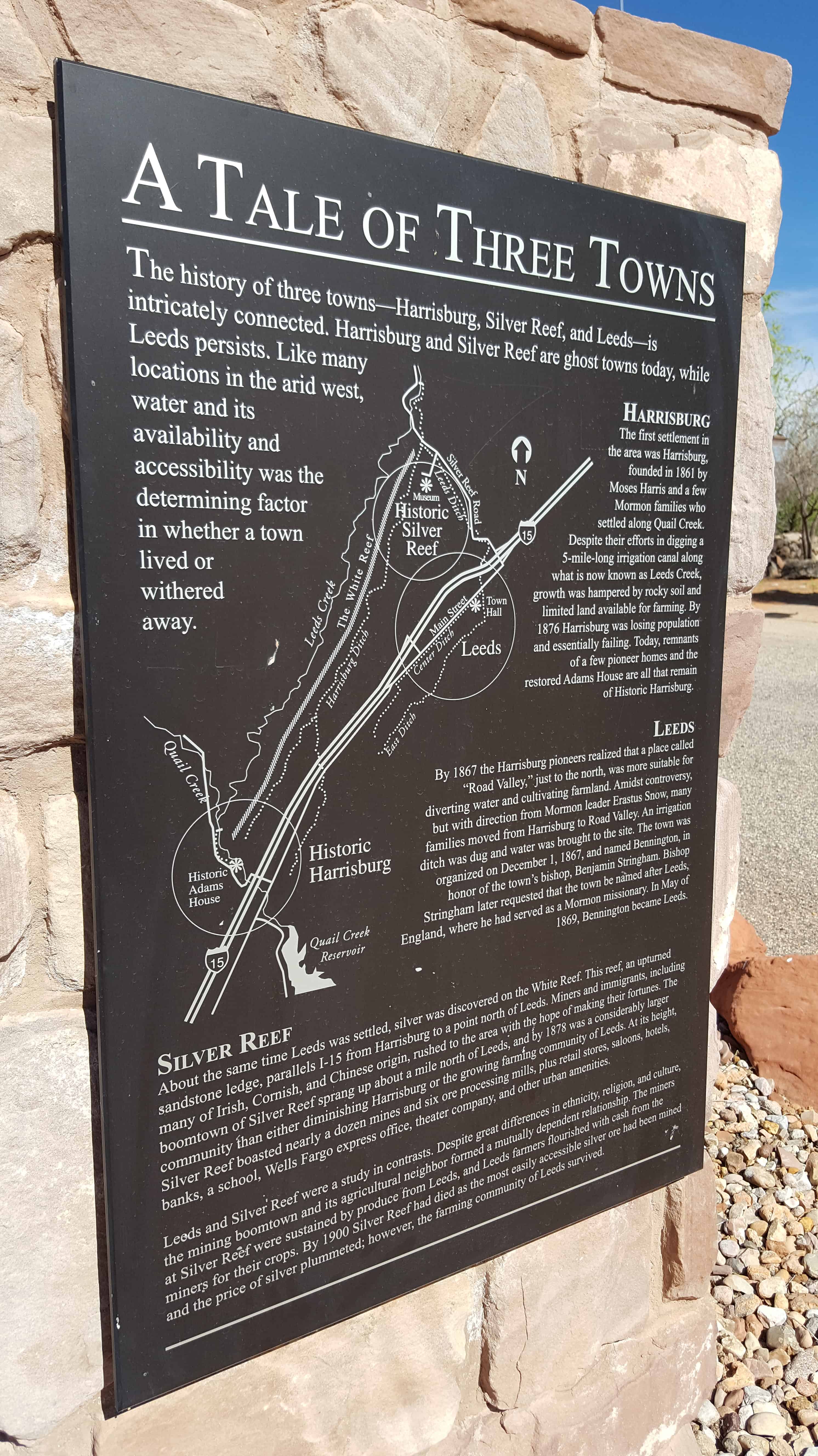A Tale of Three Towns
The history of three towns—Harrisburg, Silver Reef, and Leeds—is
intricately connected. Harrisburg and Silver Reef are ghost towns today, while Leeds persists. Like many locations in the arid west, water and its availability and accessibility was the determining factor in whether a town lived or withered away.
Harrisburg
The first settlement in the area was Harrisburg, founded in 1861 by Moses Harris and a few Mormon families who settled along Quail Creek. Despite their efforts in digging a 5-mile-long irrigation canal along what is now known as Leeds Creek, growth was hampered by rocky soil and limited land available for farming. By 1876 Harrisburg was losing population and essentially failing. Today, remnants of a few pioneer homes and the restored Adams House are all that remain of Historic Harrisburg.
Silver Reef
About the same time Leeds was settled, silver was discovered on the White Reef. This reef, an upturned sandstone ledge, parallels I-15 from Harrisburg to a point north of Leeds. Miners and immigrants, including many of Irish, Cornish, and Chinese origin, rushed to the area with the hope of making their fortunes. The boomtown of Silver Reef sprang up about a mile north of Leeds, and by 1878 was a considerably larger community than either diminishing Harrisburg or the growing farming community of Leeds. At its height, Silver Reef boasted nearly a dozen mines and six ore processing mills, plus retail stores, saloons, hotels, banks, a school, Wells Fargo express office, theater company, and other urban amenities. Leeds and Silver Reef were a study in contrasts. Despite great differences in ethnicity, religion, and culture, the mining boomtown and its agricultural neighbor formed a mutually dependent relationship. The miners at Silver Reef were sustained by produce from Leeds, and Leeds farmers flourished with cash from the miners for their crops. By 1900 Silver Reef had died as the most easily accessible silver ore had been mined and the price of silver plummeted; however, the farming community of Leeds survived.
Leeds
By 1867 the Harrisburg pioneers realized that a place called “Road Valley,” just to the north, was more suitable for diverting water and cultivating farmland. Amidst controversy, but with direction from Mormon leader Erastus Snow, many families moved from Harrisburg to Road Valley. An irrigation ditch was dug and water was brought to the site. The town was organized on December 1, 1867, and named Bennington, in honor of the town’s bishop, Benjamin Stringham. Bishop Stringham later requested that the town be named after Leeds, England, where he had served as a Mormon missionary. In May of 1869, Bennington became Leeds.(*)



Pingback: Leeds, Utah | JacobBarlow.com
Pingback: Silver Reef, Utah | JacobBarlow.com
Pingback: Harrisburg, Utah | JacobBarlow.com